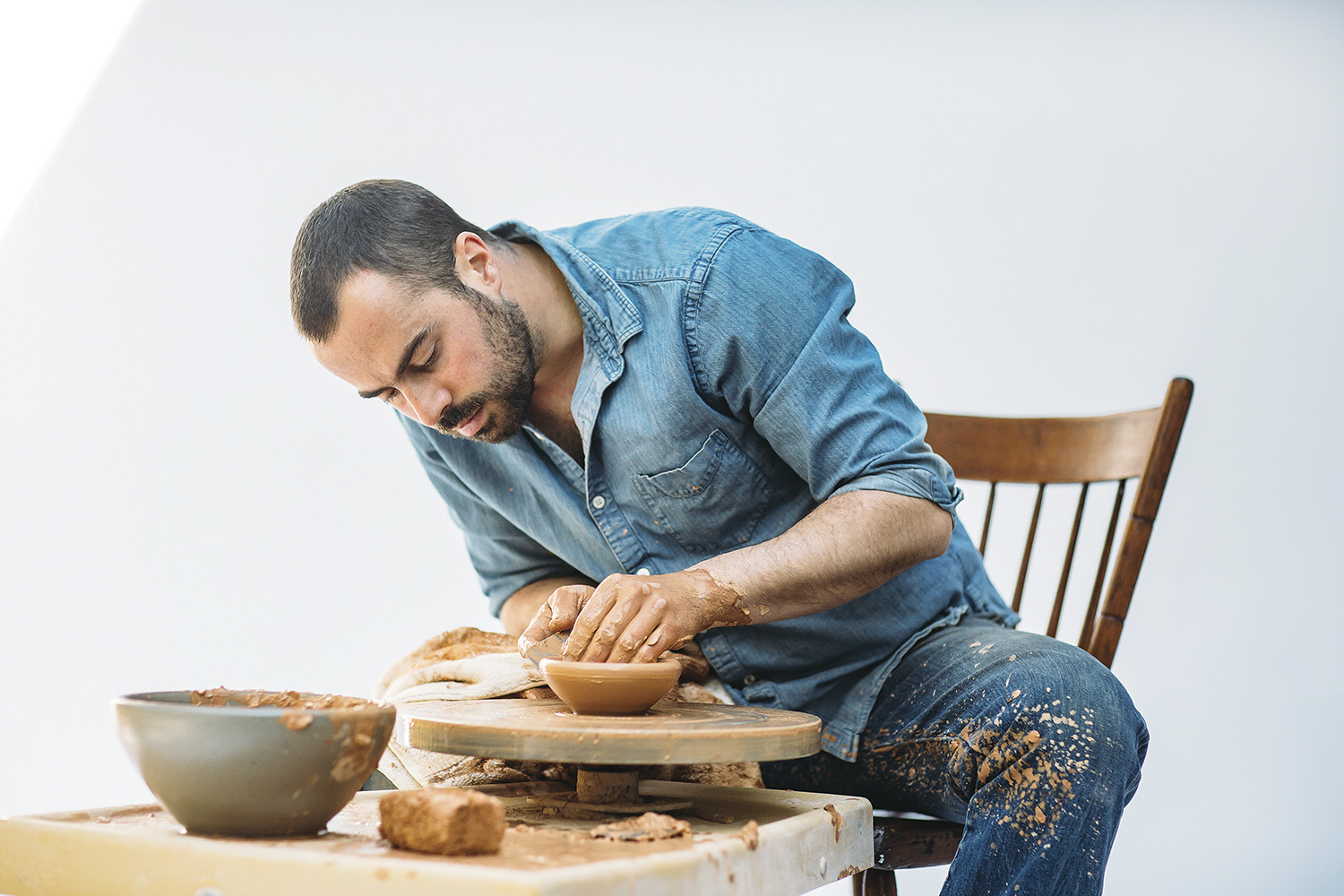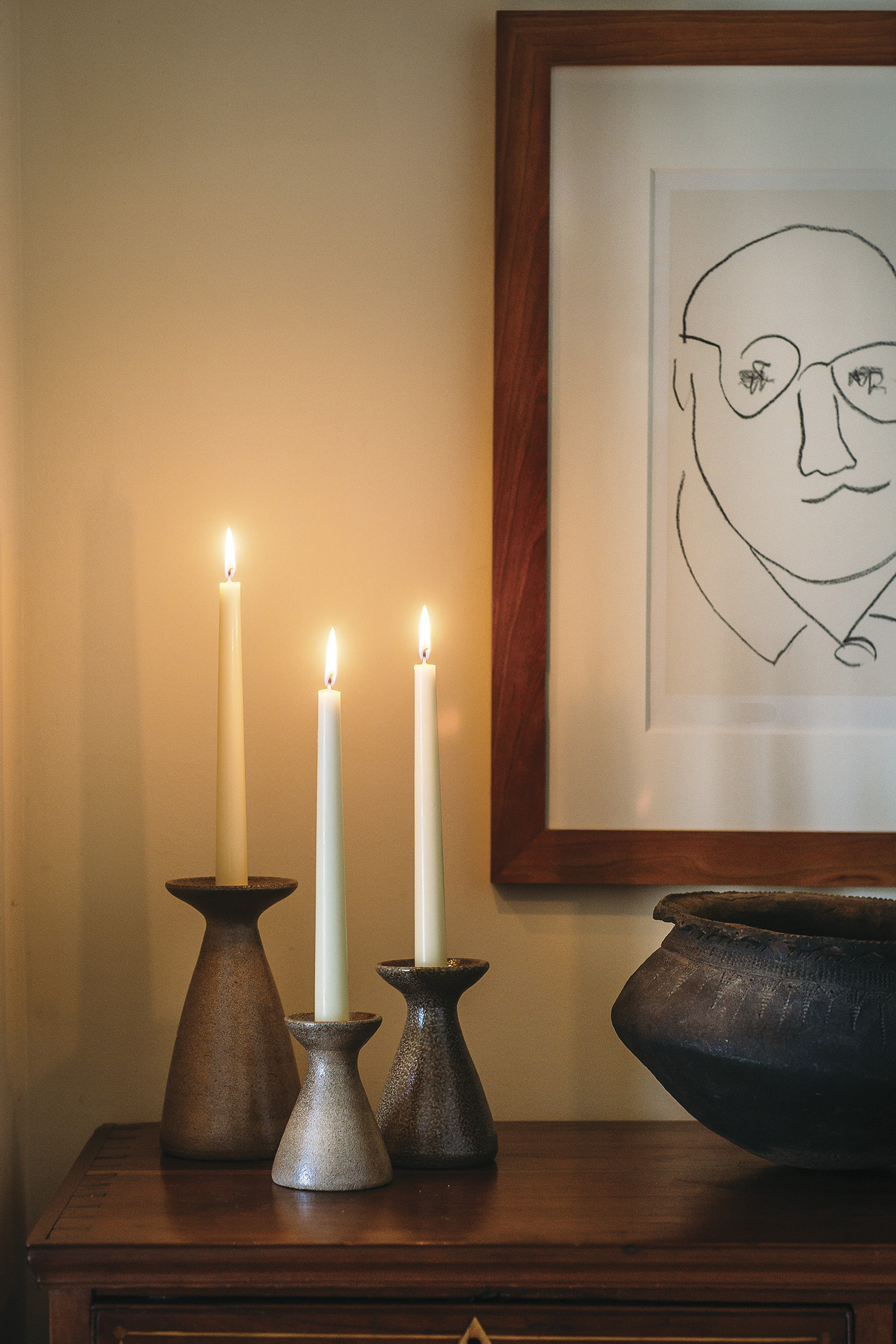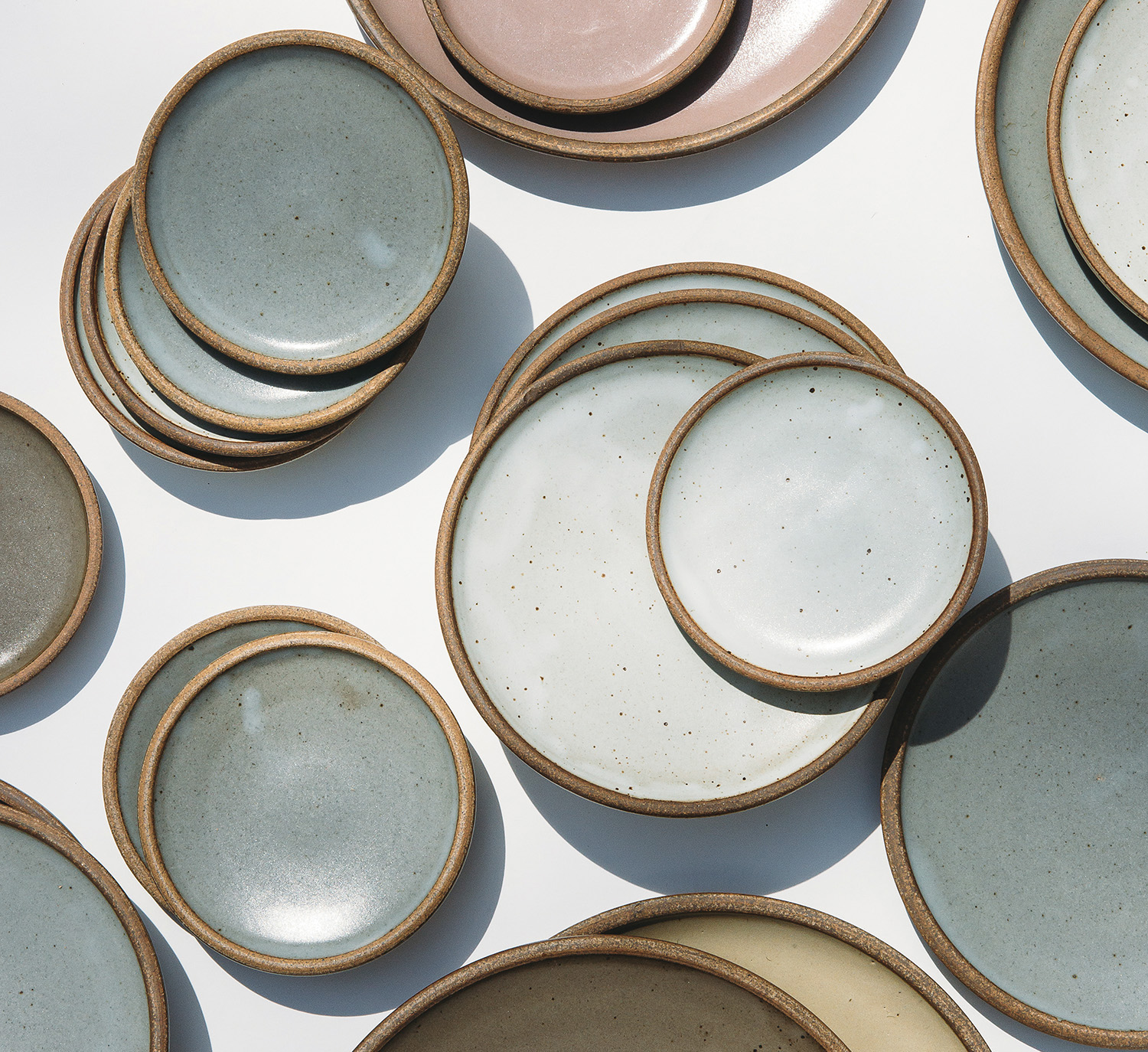
In the groove where foodie culture meets its makers, fine-art heir Alex Matisse continues to shape his name. For the past year, Matisse has taken a break from sculpting signature vessels at his rural East Fork Pottery operation in Madison County, and, with his business partner John Vigeland, has turned instead to producing small-batch, heirloom-intentioned dinnerware.
Their new collection’s pieces are favorites of chef/owners at Asheville’s trendiest restaurants, replacing the white porcelain plates that were so long the provenance of nice eateries. Robust and sophisticated, made dust-up from North Carolina clay, East Fork ware plays the table in a smart range of colors — from matte pastels to hues that look fresh-yanked from the fire.
“We wanted to create something that could grow, and that spoke to a wider audience,” says Matisse. “Focusing on the collection has really thwarted the phenomena of people coming out to the pottery to purchase a pot, but who then refuse to buy pots that don’t bear my personal stamp. Now, if someone wants a mug — arguably the most democratic of our pieces — it will say simply East Fork. It allows my own work to exist in a different world, one I have more control over.”
His name provokes awe and assumptions because, yes, he’s that Matisse — great-grandson of French master Henri, grandson of art dealer Pierre Matisse (who brought Chagall, Miró and Calder to New York), step-grandson of Marcel Duchamp.

“[Duchamp] and my grandmother Teeny [née Alexina] were close friends with John Cage and Merce Cunningham,” says Matisse, a New England transplant. His second-degree connection to the respective avant-garde musician and dance choreographer, both alumni of Black Mountain College, helps forge his Western North Carolina connection.
“I grew up surrounded by the best art to be produced in the 20th century,” says Matisse. But his natural pride is mixed with the will to transcend individual renown via a progressive collective mindset.
“I’m really enjoying the challenge of growing a sustainable business,” says the potter. “We have an amazing team that is dedicated to what we are doing … everyone plays a vital role.”
Matisse and Connie Coady, East Fork’s communications director, live in a Montford bungalow with their toddler daughter, Vita. (He hints at an Asheville-based retail endeavor in the future, to be sited in the River Arts District.) Recently, Carolina Home + Garden pulled the potter away from kin and kiln and asked him to break down his legacy.
If your decorative vessels are your contribution to your impressive family history, is the more anonymous dinnerware collection exhibiting a contrary urge to downplay individuality — to accent “work over maker?”
The new collection doesn’t take the place of the individual work — it is a separate entity, one that can grow and support far more people than I can just making work alone in a workshop at the end of a dirt road. We have created the Collection, stamped only “East Fork,” to reach a larger, more diverse audience. But it’s not a collection of art objects — it’s a collection of products through and through, albeit made completely by hand by some of the best potters in the country, thrown to excruciatingly high standards.
And yes, there is certainly an urge to stand apart from my family legacy, which was so focused on [the] individual. … If I got anything from being around all that art it was that I know what good art is and what it is not. I enjoyed the decorative work that I was making, but I was never under the impression that I was making “Art” — but many of my collectors thought it was. That contradiction was hard for me. I was ready for a change.
It might seem strange, but I am so happy to be making pots that are so much more straightforward. They are unpretentious, simple, and serve a purpose. Some of them might go on a shelf, but far more will be used everyday — for fancy dinner parties or for Eggo waffles.

When I am called back to making art, or something like it, then I will.
How do you and the East Fork team [also including apprentices Amanda Holloman-Cook and Kyle Crowder and sales director Yoko Morris] choose and create the colors? As far as architecture and interiors go, today’s general palette is all over the place: earth tones, pastel, vibrant fiesta hues. What shades are timeless?
We debated for a long time on the palette. We first worked out a range of very basic colors that could mix well together and also work with a variety of interiors. We wanted neutrals that leaned towards earth tones, which was natural for us coming from firing the wood kiln. The first color we came up with was “Soapstone,” a very calming blue-grey. We then added “Morel,” which is a taupe, and a rustic white we call “Eggshell.” All of these colors are being used by Chef Patrick O’Cain at Gan Shan Station.
After the basics were complete, we wanted a few darker hues and were looking for a bluish slate when we stumbled across “Indigo,” sort of by accident. For chefs and very modern interiors, we knew we wanted a black, so we threw that in the mix as well.
“Mars” is just the raw clay with no glaze at all. The clay is 100 percent North Carolina clays that are mixed just for us in [the town of] Star. We worked for about six months to get the clay just right, and we continue to refine it. “Mars” has also been a favorite among chefs; we just dropped off a large order to Katie Button at Cúrate.
We added “Thistle” next, a dusty pinkish purple which blends perfectly with all the basics, and lastly a brilliant burnt orange we call “Ember.” We don’t want things to be too perfect or always make sense, and Ember is certainly the standout. We didn’t know what to make of it at first … but people love it.
We are a small team, and for each new glaze we introduce, there’s probably about 40 hours of research and development that goes into it, so we have to be careful how we spend our time.
Talk about the idea of craft as a lifestyle enhancer versus prohibitive price-point. It’s a big thing now for couples to put handmade items instead of department-store ware on bridal registries, and certainly, craft is an important part of the WNC economy. Is it only for elite budgets, or do you think it’s become a more inclusive notion?
We feel strongly that the collection should be affordable. The lowest priced item is a salt cellar for $12. Our coffee cups are $28. We have about six registries going at the moment, and we are anticipating more and more. Our goal is to make work for our generation. While my own individual pieces are more expensive, the collection is designed to be accessible for most people with a small budget for something special.
It’s still a luxury item for sure — you can go to Target and get a set of dinner plates for the amount you pay for one of ours. But we live in a place and time that appreciates what we do, and is willing to spend a little more for something that was made with care, love, and skill.
There’s a new generation of makers now in Western North Carolina, young people who are making work in a different mode, that could be taken to New York or LA and be right at home. That’s what we are excited to be a part of.
What’s your favorite summer meal and summer beverage — and which of your pieces would you choose to serve them in?
The Frenchman in me enjoys nothing more than a frigid bottle of Rosé and a beautiful Niçoise salad (perfectly boiled eggs, thin young green beans, new potatoes, oil-cured tuna, olives, tomatoes, and the Matisse family salad dressing), enjoyed on the porch watching Vita play in the grass. The East Fork Serving Platter is the perfect dish for this beautiful salad.
For more information about the new East Fork Collection, visit eastforkpottery.com.
